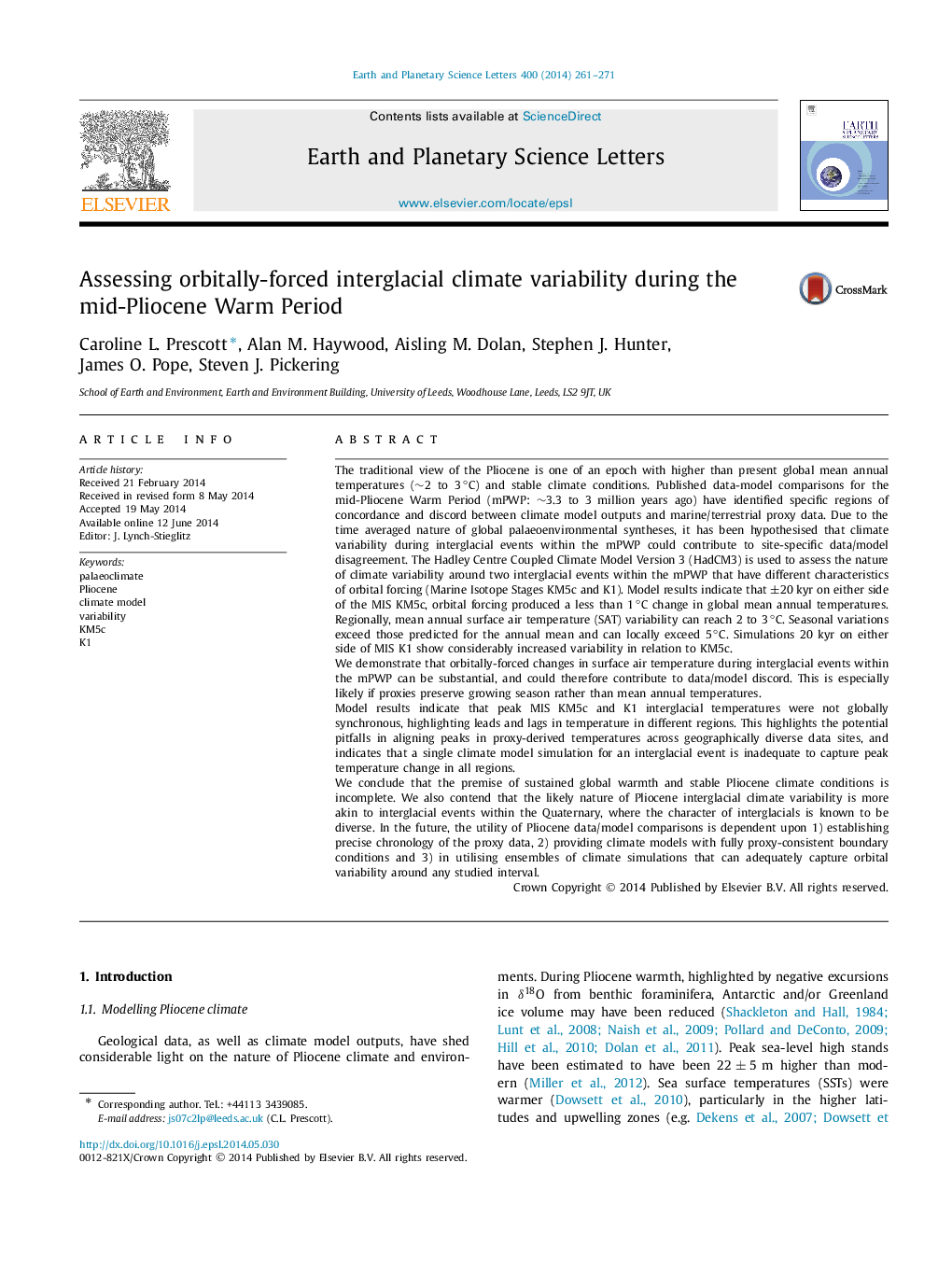| کد مقاله | کد نشریه | سال انتشار | مقاله انگلیسی | نسخه تمام متن |
|---|---|---|---|---|
| 6428790 | 1634756 | 2014 | 11 صفحه PDF | دانلود رایگان |
- Variation in temperature is higher around K1 than KM5c and the to show different characteristics.
- The seasonal differences in surface air temperature is found to be larger than mean annual changes.
- Maximum warming around the two peaks is neither spatially or temporally synchronous.
- This highlights how maximum warming is dependent on the nature of orbital forcing.
- A single interglacial simulation cannot capture peak temperature change everywhere.
The traditional view of the Pliocene is one of an epoch with higher than present global mean annual temperatures (â¼2 to 3â°C) and stable climate conditions. Published data-model comparisons for the mid-Pliocene Warm Period (mPWP: â¼3.3 to 3 million years ago) have identified specific regions of concordance and discord between climate model outputs and marine/terrestrial proxy data. Due to the time averaged nature of global palaeoenvironmental syntheses, it has been hypothesised that climate variability during interglacial events within the mPWP could contribute to site-specific data/model disagreement. The Hadley Centre Coupled Climate Model Version 3 (HadCM3) is used to assess the nature of climate variability around two interglacial events within the mPWP that have different characteristics of orbital forcing (Marine Isotope Stages KM5c and K1). Model results indicate that ±20 kyr on either side of the MIS KM5c, orbital forcing produced a less than 1â°C change in global mean annual temperatures. Regionally, mean annual surface air temperature (SAT) variability can reach 2 to 3â°C. Seasonal variations exceed those predicted for the annual mean and can locally exceed 5â°C. Simulations 20 kyr on either side of MIS K1 show considerably increased variability in relation to KM5c.We demonstrate that orbitally-forced changes in surface air temperature during interglacial events within the mPWP can be substantial, and could therefore contribute to data/model discord. This is especially likely if proxies preserve growing season rather than mean annual temperatures.Model results indicate that peak MIS KM5c and K1 interglacial temperatures were not globally synchronous, highlighting leads and lags in temperature in different regions. This highlights the potential pitfalls in aligning peaks in proxy-derived temperatures across geographically diverse data sites, and indicates that a single climate model simulation for an interglacial event is inadequate to capture peak temperature change in all regions.We conclude that the premise of sustained global warmth and stable Pliocene climate conditions is incomplete. We also contend that the likely nature of Pliocene interglacial climate variability is more akin to interglacial events within the Quaternary, where the character of interglacials is known to be diverse. In the future, the utility of Pliocene data/model comparisons is dependent upon 1) establishing precise chronology of the proxy data, 2) providing climate models with fully proxy-consistent boundary conditions and 3) in utilising ensembles of climate simulations that can adequately capture orbital variability around any studied interval.
Journal: Earth and Planetary Science Letters - Volume 400, 15 August 2014, Pages 261-271
